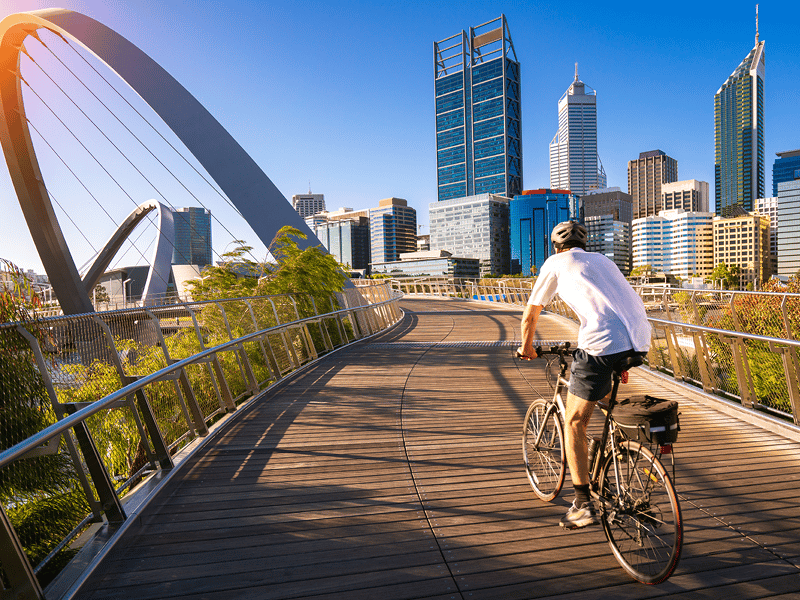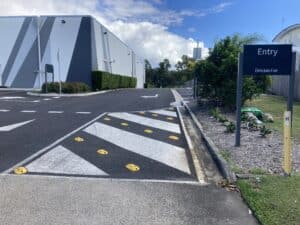

With millions of us now riding to work instead of driving or catching public transport, it’s more relevant than ever to remember why cycle safety matters.
While learning how to ride the humble bicycle is a right of passage for most of us at around the age of five, as we grow, some of us fall out of love with this unique mode of transport. In contrast, others return to riding a bike later in life, particularly as a means to get fitter, spend less on petrol, or to simply be more sustainable and assist in saving our planet.
In fact, over 8.8 million Australians ride bikes each year – a figure that both federal and state governments are hoping to increase. Not only is bike infrastructure cheap compared to road and rail upgrades, the associated health and cost benefits are often overlooked.
The great news is that while there is already an enthusiastic market of people who are not yet riding a bike, we do have a few things to address when it comes to cycle safety. In Victoria alone, 75% of the population are ‘interested but concerned’ about potentially using a bicycle as a mode of transport.
If we can make bikes a safe and enjoyable transport option to a wider and more diverse range of people, such as children, women and older adults, we can expect cycling to have an even greater uptick – but what can we do to address cycle safety?
How Australia Is Tackling Cycle Safety On The Roads
While a growing number of people are choosing to use bicycles as their preferred mode of transport, the reality is that bike riders are disproportionately represented in road crash statistics in this country.
In fact, data shows that one in five road crash hospitalisations in the last five years have involved a bike rider, with this group also being 34 times more likely to sustain serious injuries in a crash when compared to car occupants. It’s for this reason that cycle safety matters.
Despite these numbers, much of the approach towards cycle safety has been focused on what the riders should do, such as being instructed to wear a helmet and reflective clothing. In reality, a more targeted approach is necessary to reduce the statistics, and changes in policy, technology, driver behaviour and road environments also need to shift.
Where possible, we should be prioritising bike lanes that are physically separated from the road space, better equipped to protect riders from crashes with vehicles. As seen in school traffic management plans, one of the most effective road safety measures is to keep different types of road users separate to avoid the risk of a collision.
Despite this, painted bike lanes only provide the basic level of separation, and can wear away – particularly on tight corners where drivers most often cross into the bike lane. While it would be great if drivers would simply stop driving in designated bike lanes, the issue is two-fold. Cyclists – particularly unskilled ones or newbies to this mode of transport – sometimes come out of the bike lane too. When it comes to navigating corners, intersections and roundabouts, cyclists are at an even greater risk.
It doesn’t take much to improve cycle safety, but failure to address it can have catastrophic results. Short of building a concrete wall, the good news is that the verdict is in, and the data shows that low profile rubber kerbing and additions such as rumble bars are highly effective at keeping drivers out of the bike line.
By adding road safety measures such as this to keep drivers where they should be, this helps to increase the confidence of biker riders while simultaneously keeping car users aware of their surroundings. For local councils looking to invest in such technology, it’s important to partner with an industry expert who is capable of offering tailor made solutions – but where do you find them?
Partner With The Experts On Road Safety
At Speed Humps Australia, we’ve spent twenty years focusing on one thing: to provide one style of product, and to do it exceptionally well. We have worked tirelessly to develop specifications that do not fade or deteriorate, are easy to install, and are made from high-quality, recycled rubber for minimal environmental impact.
With just a handful of our clients around the nation including KFC, Taco Bell, McDonalds and numerous local governments and mining operations, our rumble bars, speed humps and wheel stops have been purposefully designed to truly go the distance.
As our design and production is all handled in house and supplied Australia wide, get in touch with us today to request a quote or discuss how we can help with providing a tailored solution to your unique project requirements.



For 10 years, our focus has been on one thing: to provide one style of product and to do it well.
Our wheel stops, speed humps and rumble bars meet Australian Standards, don’t fade, and we’ve never needed to replace one.

For 10 years, our focus has been on one thing: to provide one style of product and to do it well.
Our wheel stops, speed humps and rumble bars meet Australian Standards, don’t fade, and we’ve never needed to replace one.